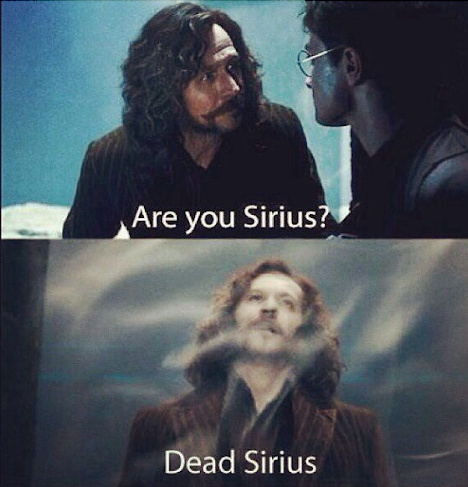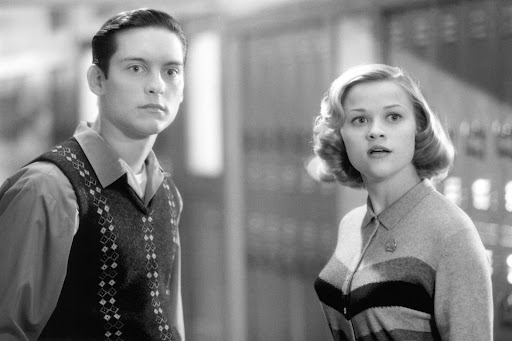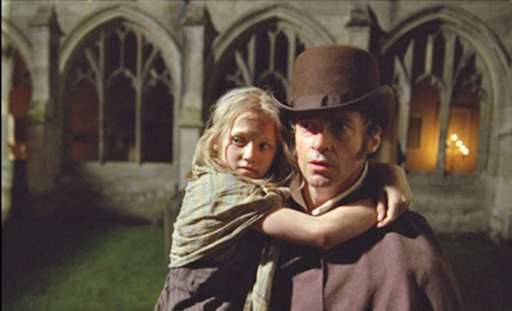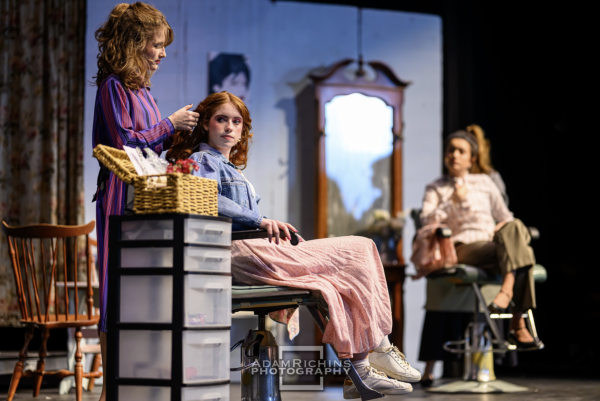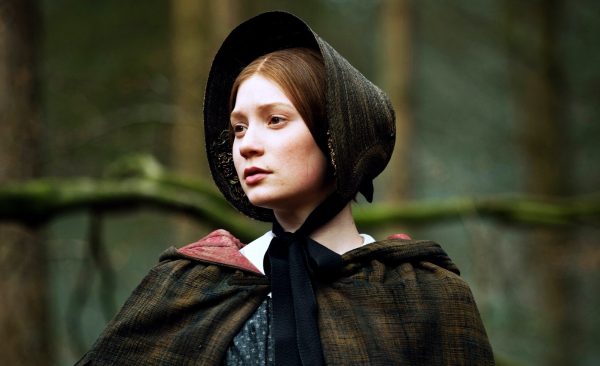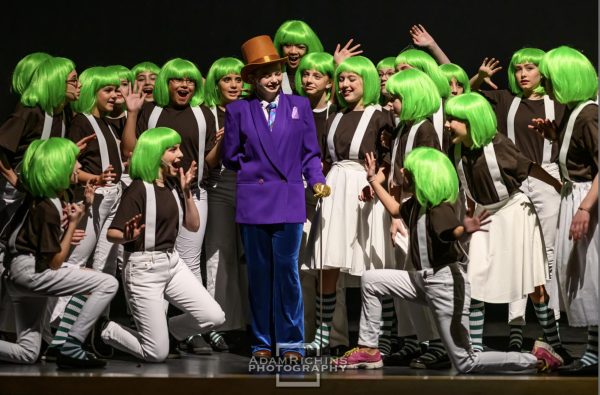Movie Review: Dune

Based on the dystopian sci-fi book series by Frank Herbert, ‘Dune’ captivates audiences in the theatre and at home.
After two years of waiting, Denis Villeneuve’s 2021 film Dune is finally here! Last Saturday, I went to see it with some of my friends, so here’s my review:
To put it plainly, the film is beautifully brilliant. Dune does Frank Herbert’s novel justice and executes his story fantastically. However, my opinion on why it is great may not be shared by others. The acting, cinematography, sets, props, directing, etc. were all extremely amazing, but the story can be hard to grasp. Much like Herbert’s novel, Dune is very confusing with new concepts, names, and a whole different culture and setting. The novel is sci-fi, taking place in a world and time that is not ours. As I mentioned before, I went to see the movie with some friends. None of them had read the book, seen the trailer; they knew NOTHING about the movie and only went to see it because of Timothèe Chalamet. I mean that’s a great reason to see it because, after all, he is a great actor. However, since they didn’t know the slightest thing about the film, they were unamused, confused, and plainly bored. They ended up walking out of the theater in the middle of the film to go to H&M. In my opinion, I think that was a bad move based on how amazing Dune is and also how the film NEEDS to be seen in the theater. I even ended up watching the piece of cinema a second time. It was made to be seen in the theater. I know it’s on HBO Max but please, go watch it in theaters. So, if you plan to see Dune, (which I highly suggest) I would recommend reading the book, which is also confusing (it took me six months to read after having to re-read pages and pages), or you can read a summary, which is probably much less confusing than the book and takes a lot less time.
Denis Villeneuve’s 2021 film Dune spans a long two hours and thirty-five minutes, but it is only half of the book. I didn’t know this until the movie ended and I was like, “Wait what! I have already waited two years for this and it’s not over!” Later that night I researched to find out when part two is coming out. At this point, the second part wasn’t cleared for filming. However, I can now proudly say it will come out around 2023 after Dune: Part One is a box office success. So now, I only have to wait four years to watch the entire film! Yay.
Now finally, here is the review you’ve been waiting for (almost longer than I have been waiting for the film to come out). Dune: Part One, as I said before, was and is great in my humble opinion. The film is aesthetically pleasing, with each shot portraying a beautiful image. As previously mentioned, Villeneuve stays true to the original text with costumes, props, score, script, etc.; the whole film is done quite well and stays true to the book. In fact, the film is in two parts because Villeneuve refuses to adapt the book into one movie because he needed to stay true to the source.
During one of the most iconic scenes of the story, Paul Atreides is tested by placing his hand in a box filled with immense pain; he will die if he removes his hand. During this scene, “The Voice” is first used, conveying the Reverend Mother’s power and demonstrating the power with “The Voice.” Denis did a great job with “The Voice.” In theaters, it shook the room with its power and left a sublime and fearful feeling, as “The Voice ” was intended. This scene also proves the great cinematography and editing of a movie. (Also, off-topic but they need to make Best Editing an Oscar category because of how important editing is to bring a film together.) As Paul is summoned by the Reverend Mother with “The Voice,” the shot is shot from Paul’s view with a blurry, fast-paced image and shot. This shot demonstrates how Paul, the son of the Duke and thought to be the long-awaited kwisatz haderach (a god-like figure), is controlled and less powerful than the Reverend Mother. Rampling’s performance as the Reverend Mother serves justice to the awe and fear her character holds. The famous quote: “I must not fear. Fear is the mind-killer. Fear is the little-death that brings total obliteration” is originally said by Paul in this scene in the book, but instead, Paul’s mother speaks this in this version. Denis made this change to depict the mother and son relationship between Paul and his mother, Lady Jessica. Denis breaks down this scene in this Vanity Fair video.
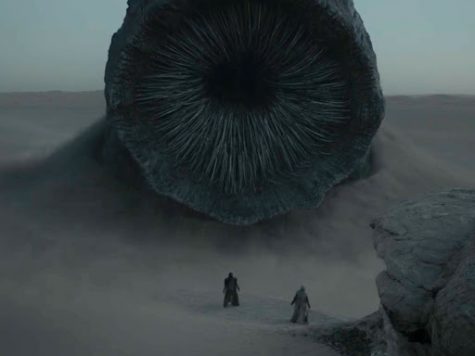
As for the plot of the film, it follows Herbert’s novel. Villeneuve did a good job incorporating key scenes into the film and making them come to life visually. Such as the sandworms, the ships, technology in their world (such as the protection shields in battle). Villeneuve portrays the sublimity of Arrakis masterfully. The gigantic size of the sandworms mixed with the actor’s great expression towards them enables the audience to understand the terror and threat of these worms.
The acting was great, as expected, with a cast including Timothee Chalamet, Zendaya (whose appearance in the film only lasts around 8 minutes, making her appearance feel like a perfume ad), Rebecca Ferguson, Oscar Issac, Charlotte Rampling, and many more phenomenal actors. Together, the acting of the film truly brings the audience in because of the portrayal of each scene and each actor’s dedication to each scene’s objective. Skarsgård portrays Harkonnen (aka the giant floating worm guy) in the film. Before this film, I had watched the 1984 version of Dune. I was terrified by Harkonnen in that film, and I was CONVINCED he could not get any scarier. Well, I was wrong. Skarsgård’s performance terrified me as he floats while speaking in a low voice.
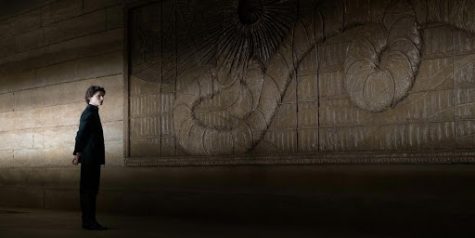
As for sets and props, Villeneuve wanted to portray the movie as “a period movie more than a sci-fi, there’s something historical. And we try to protect that, that the quality and the costume design and some elements of the set design and definitely in the, in the props too.” Even though the film takes place thousands of years into the future of a different world, the sets and costumes of the film are derived from: “World War II-era bunkers and Mayan temples—with a bit of Brazilian Modernism thrown in for good measure,”(Elle Decor’s Anna Fixsen on “HOW PRODUCTION DESIGNER PATRICE VERMETTE CREATED THE EPIC LOOK OF ‘DUNE’”). After reading Dune, Vermette noticed there were not many clues to how the architecture and design of Dune look. Rather, he claimed, “Architecture and design should respond to an environment and also respond to the storytelling.” In the scenes shot on the Atreides’ home planet of Caladan, Many interior elements and props such as rugs, furniture, and lighting were custom-made for an aged and more ancient feel because of the Atreides’ long family history; many elements hinted to medieval Japanese culture.

The costume pieces of Dune were inspired by Greek and Roman mythology for the costumes of House Atreides and House Harkonnen. The costumes on each planet were based on their color scheme. For instance, on Arrakis, the costumes were based on their warm orange, brown, and beige tones.
The Stillsuit, a needed piece of protection worn in Arakis, where the story is set, was crafted with such close attention to detail in the book and science in life. The Stillsuit’s purpose is to collect moisture, sweat, tears, and any other source of water your body releases during a day and turn it into water, which you drink. Without it, you would only survive a few hours on Arrakis because Arrakis is THAT dry. Variety’s Carole Horst in “‘Dune’ Costume Designers Break Down the Construction of Stillsuits and Each Planet’s Unique Look” explains: “The team made what West called a “micro-sandwich” of acrylic fibers and porous cottons that would wick the water away from the body and keep the actors cool in the suits.” To understand how they designed the still suit in further detail, watch WIRED’s video with the costume designers of Dune.
Overall, I felt that Villeneuve did a great job in portraying the insanity of Herbert’s Novel in the few hours he had to portray it. Now… we wait another two years for the epic ending of the story.
Abbie Lindblad ‘24, Co-Arts and Entertainment Editor
24alindblad@montroseschool.org




